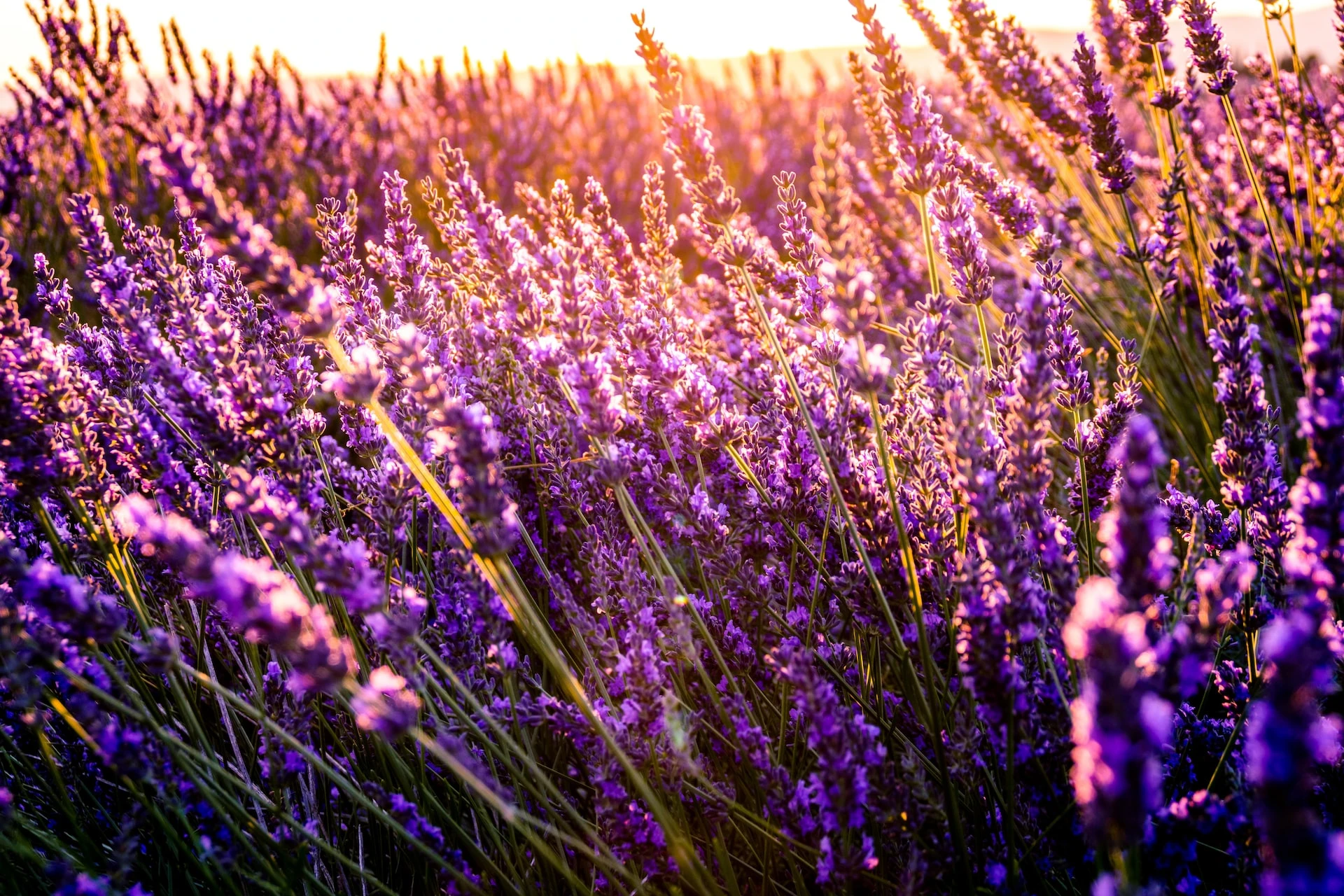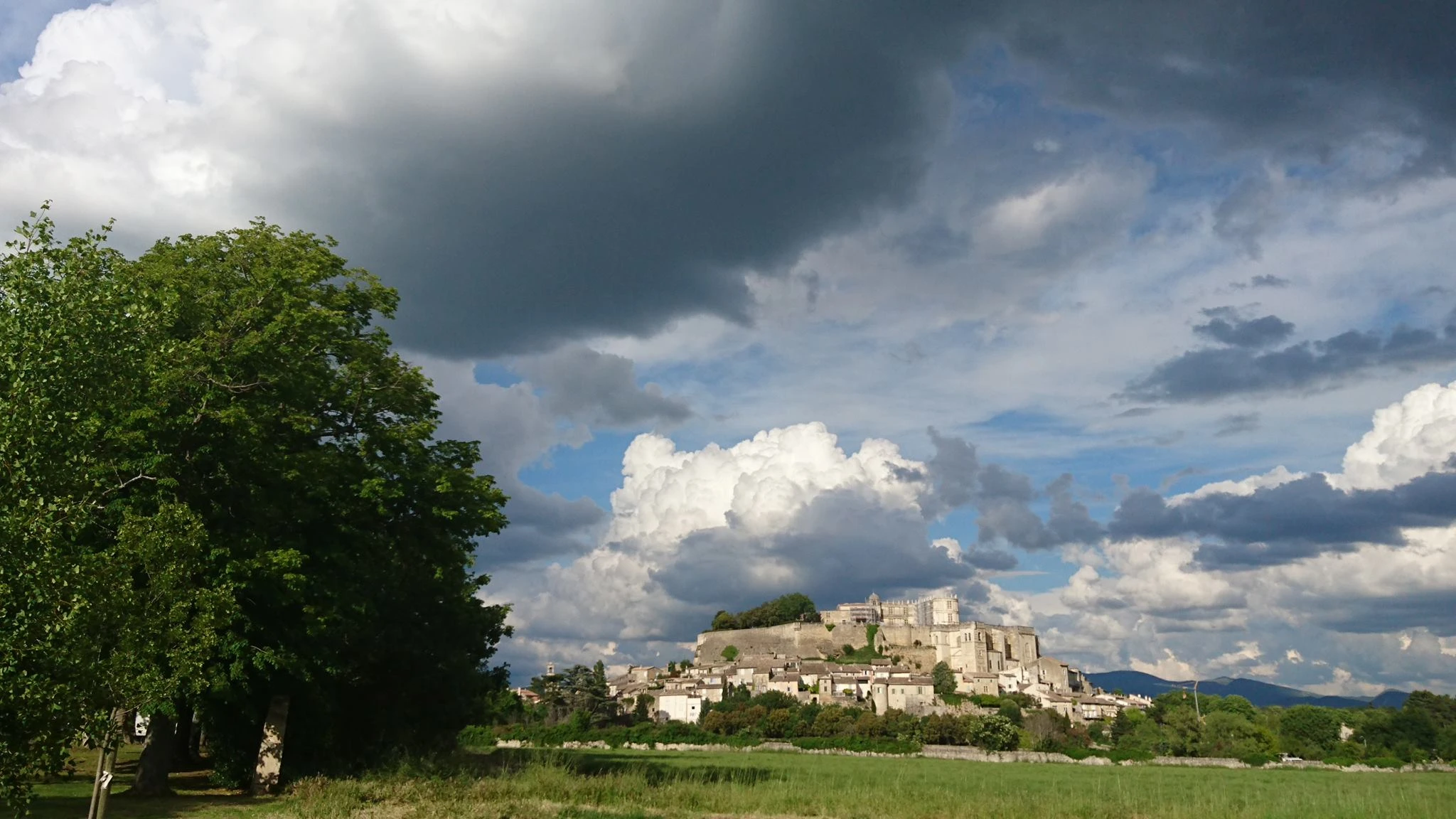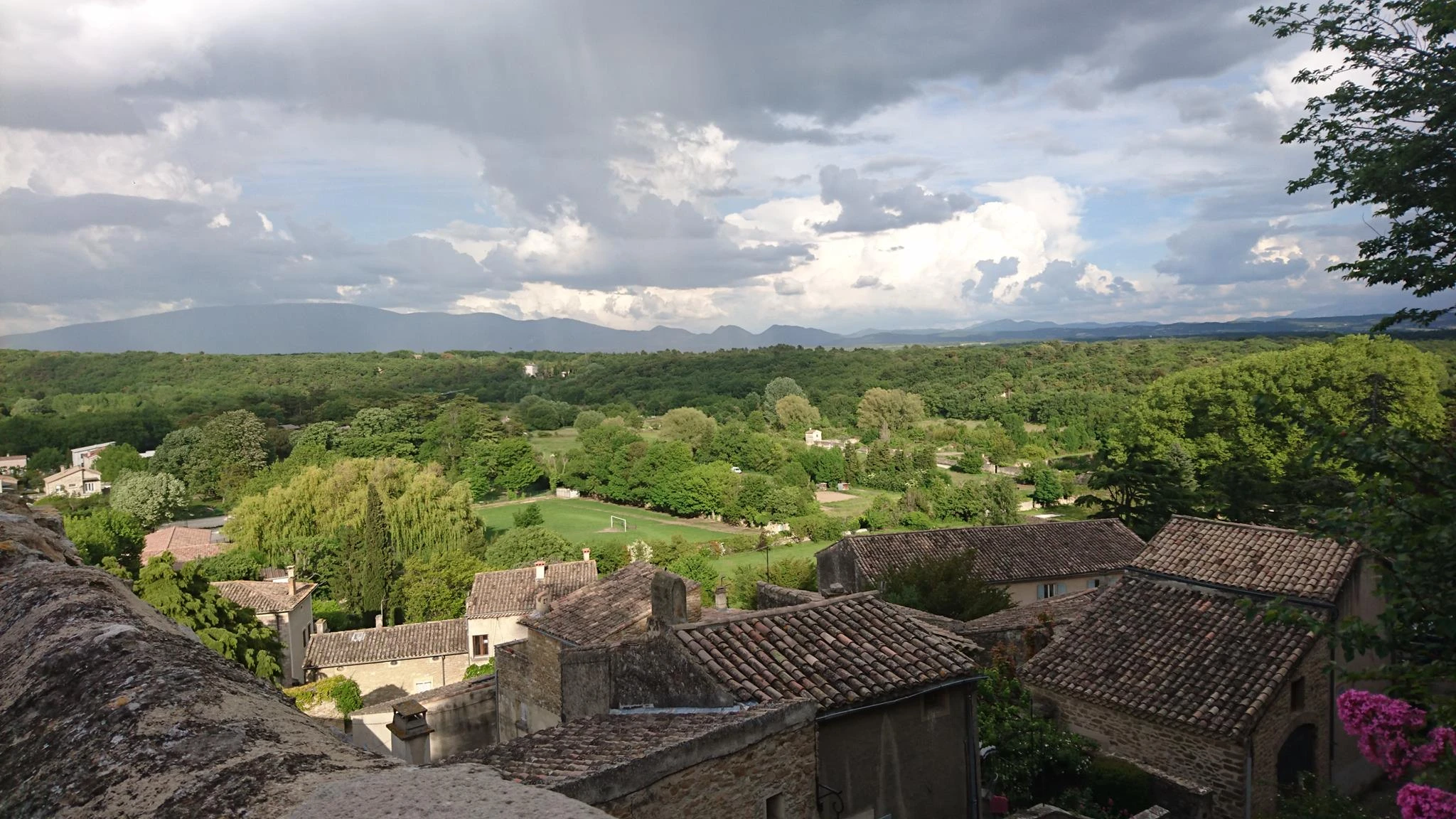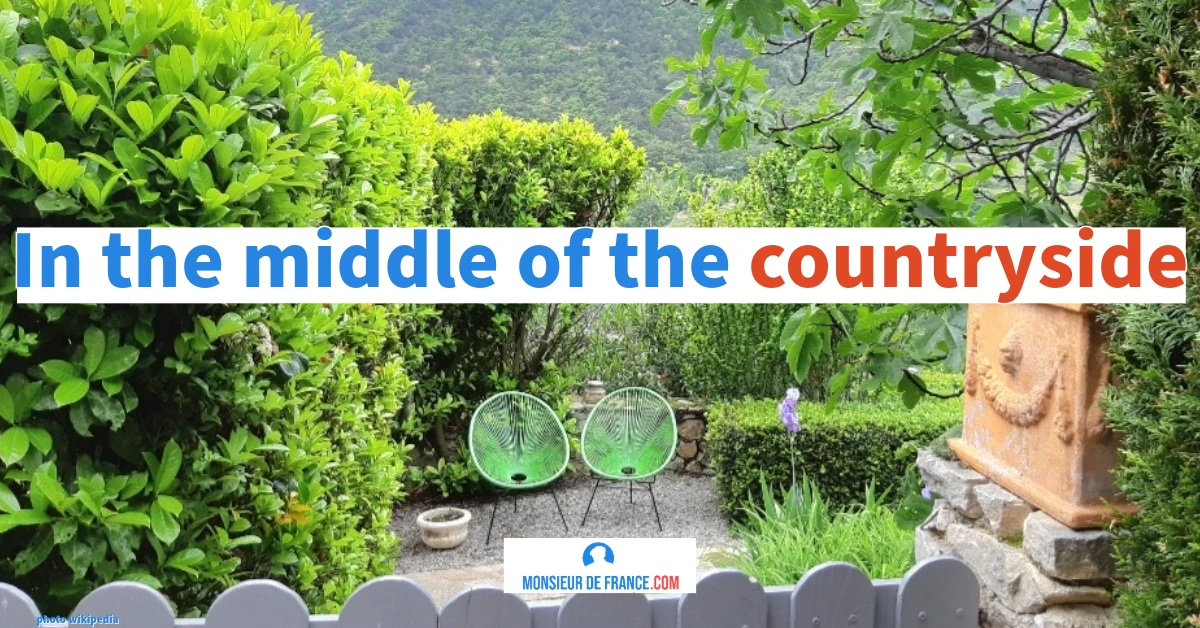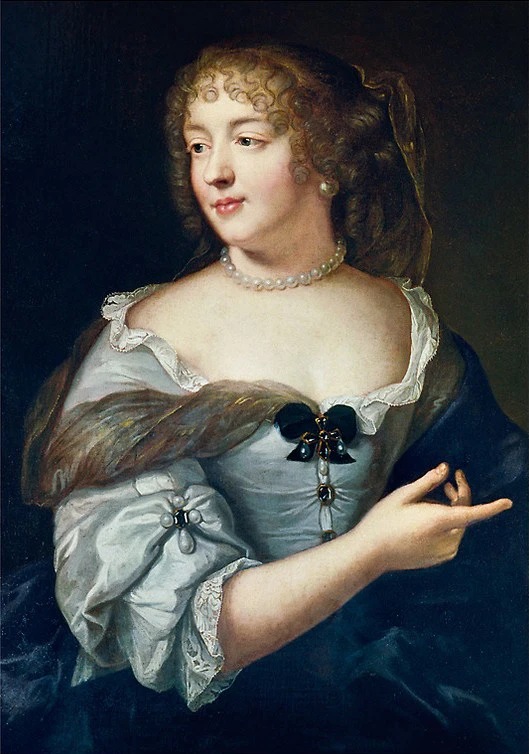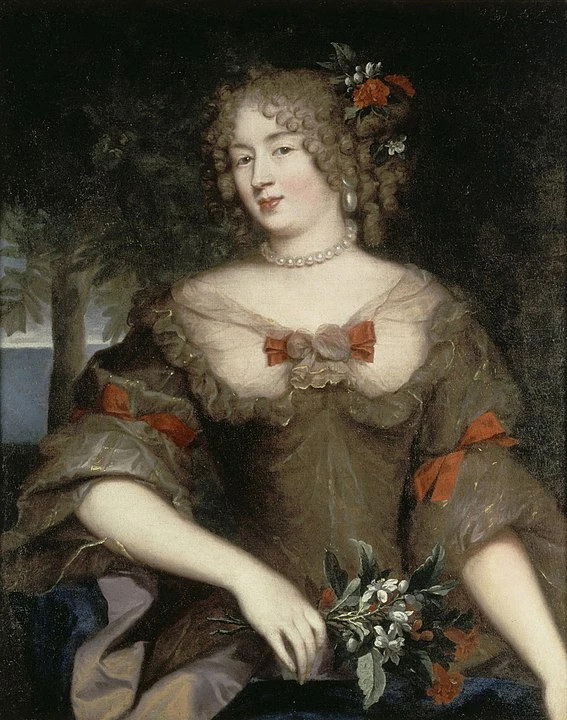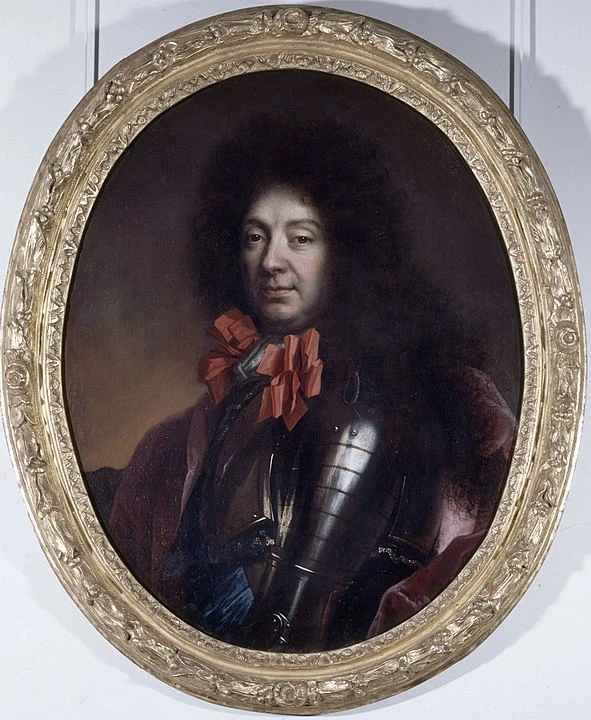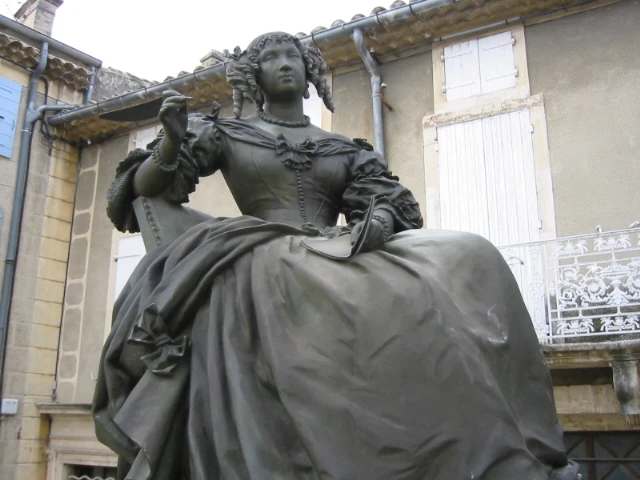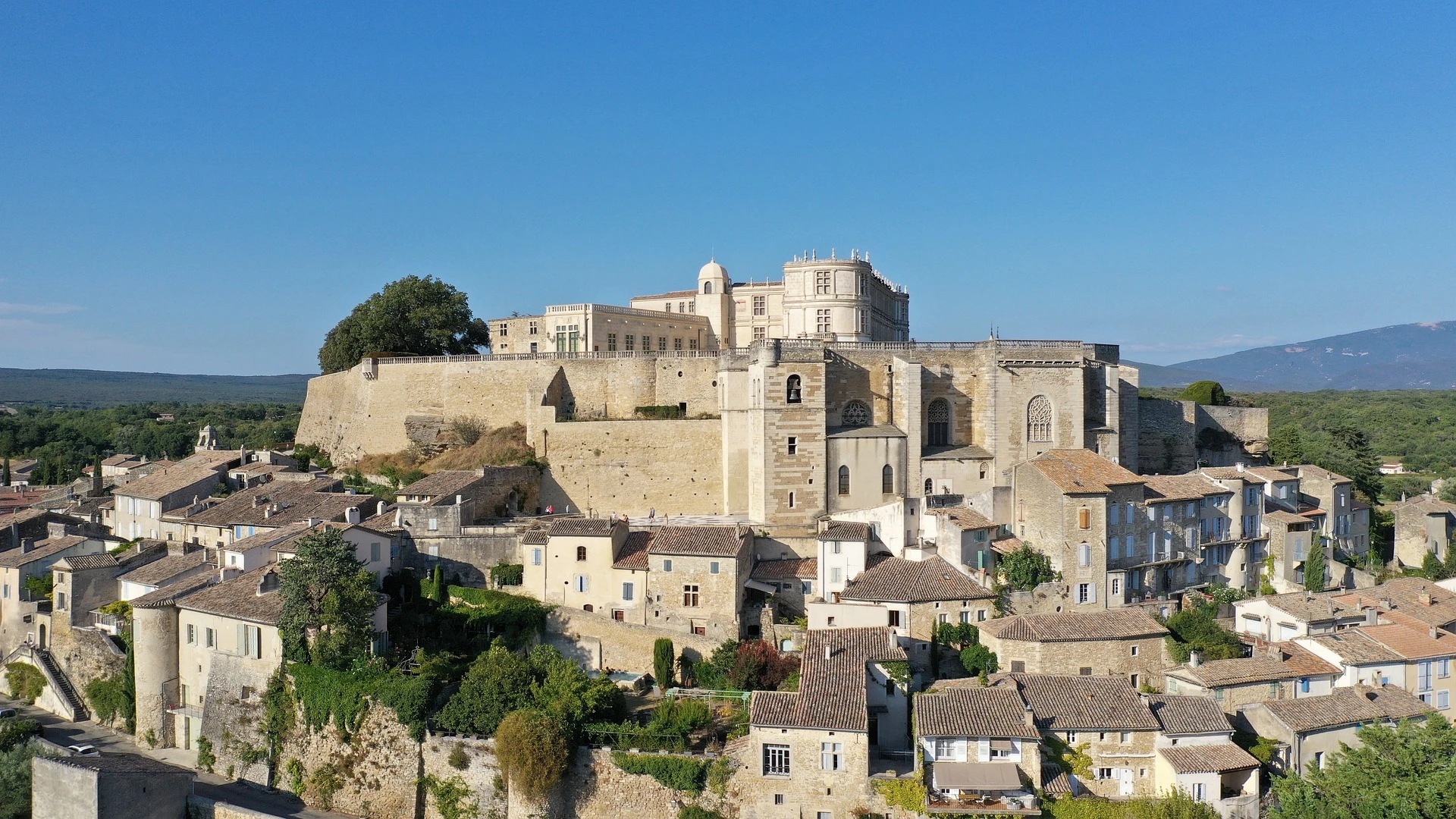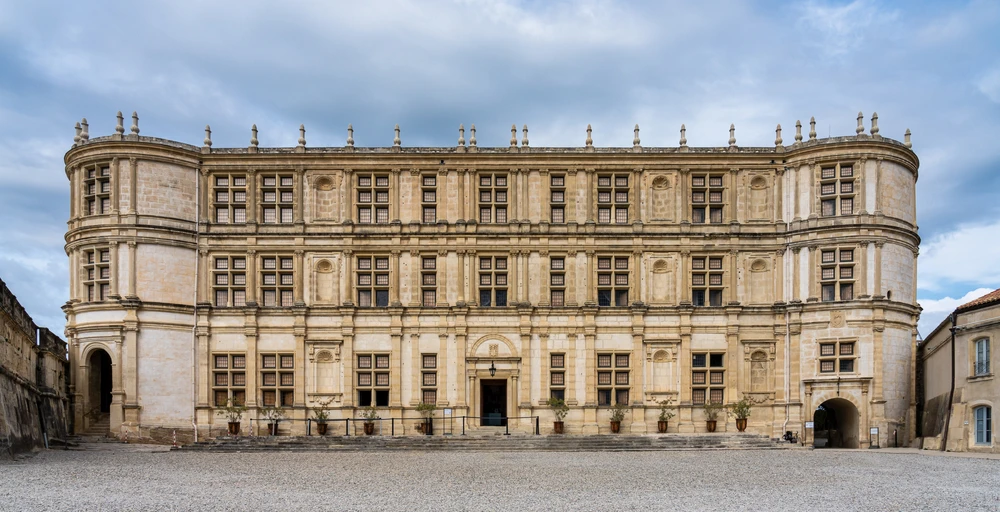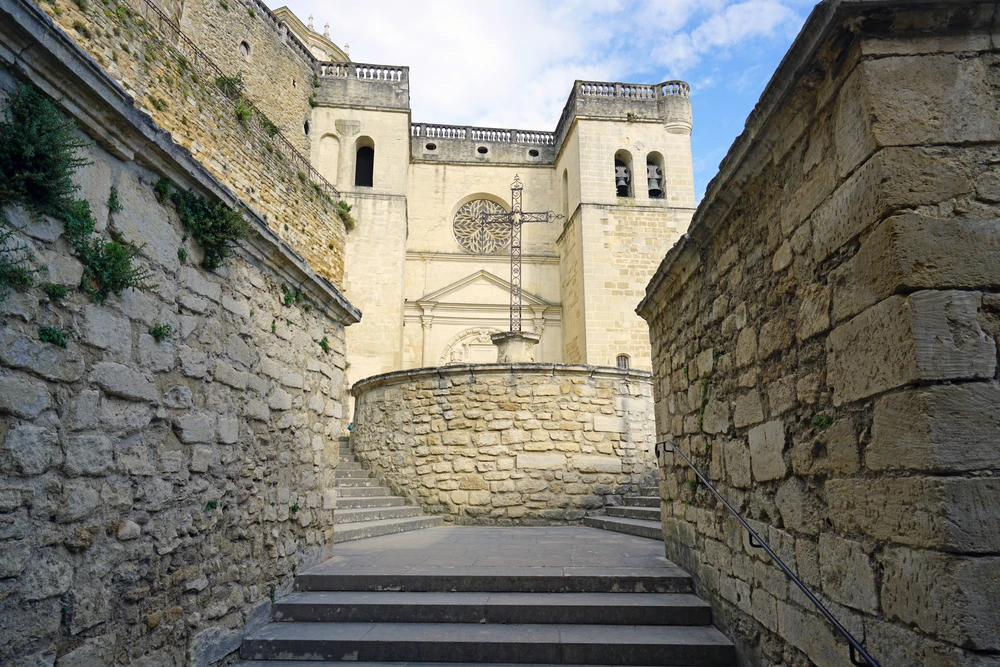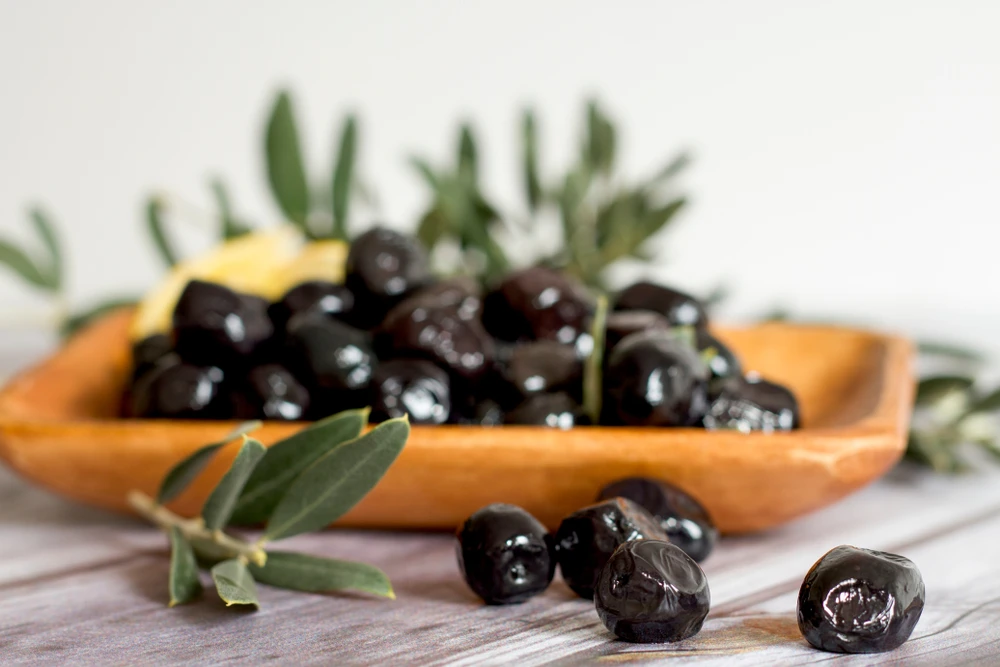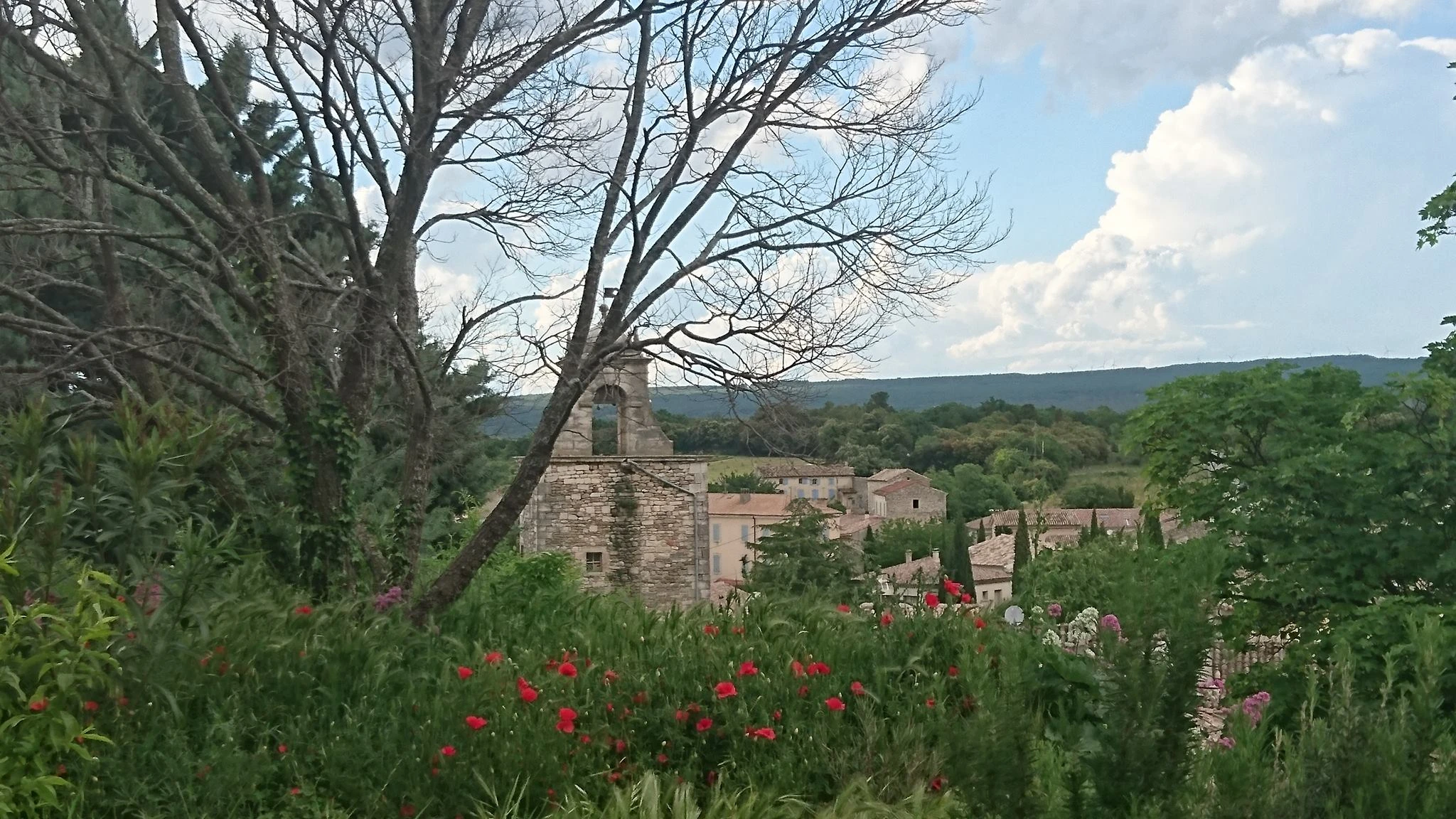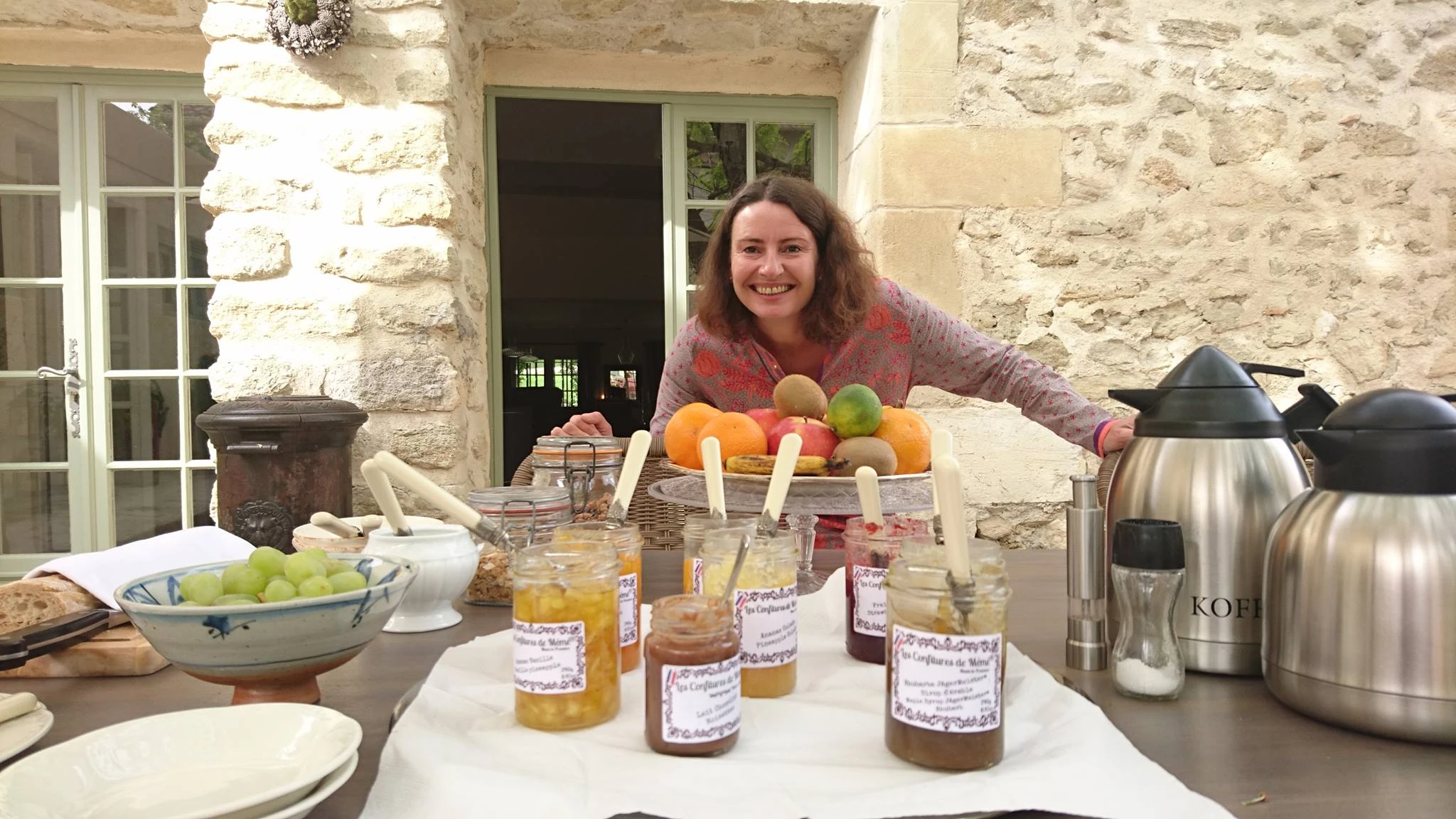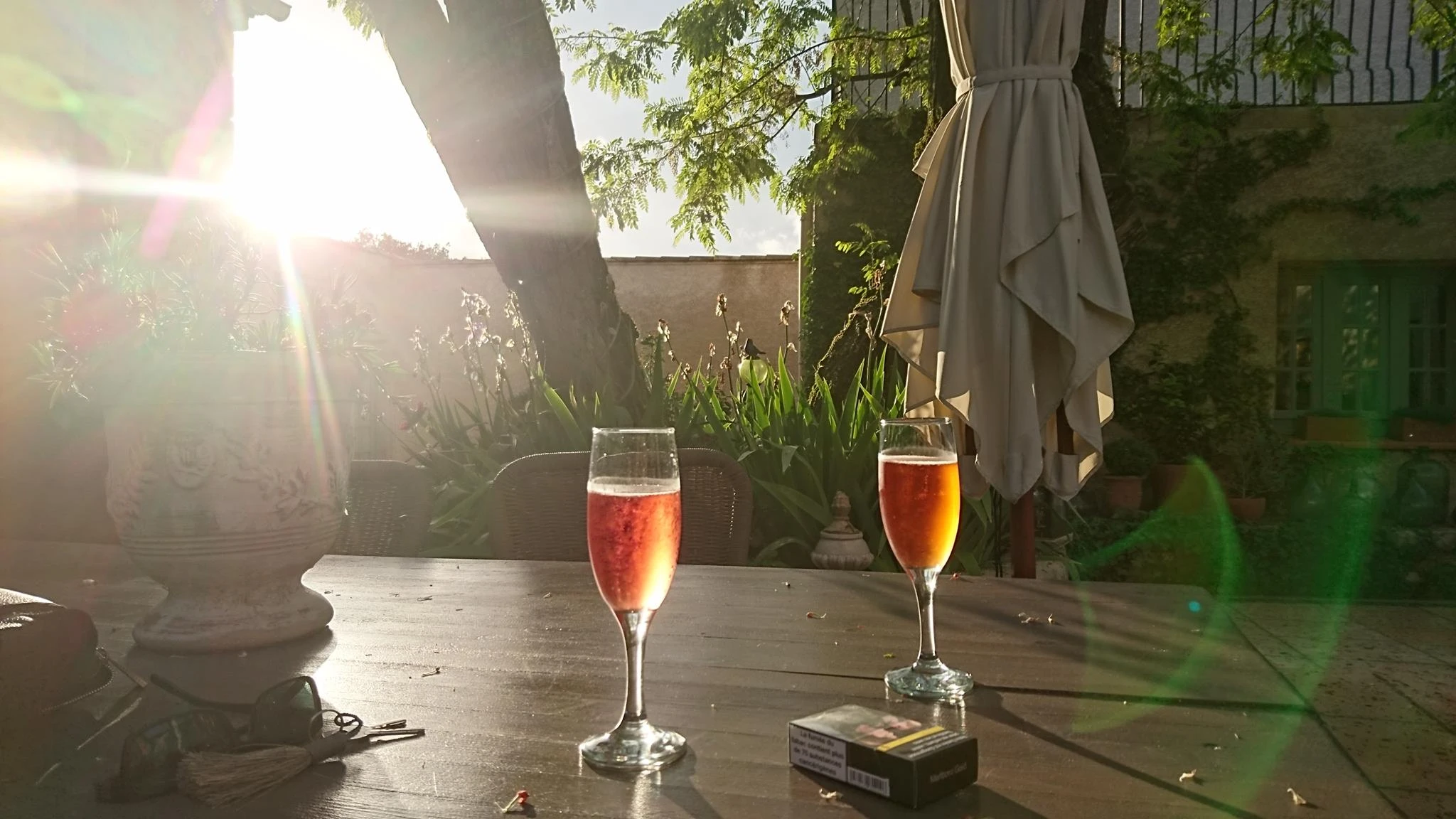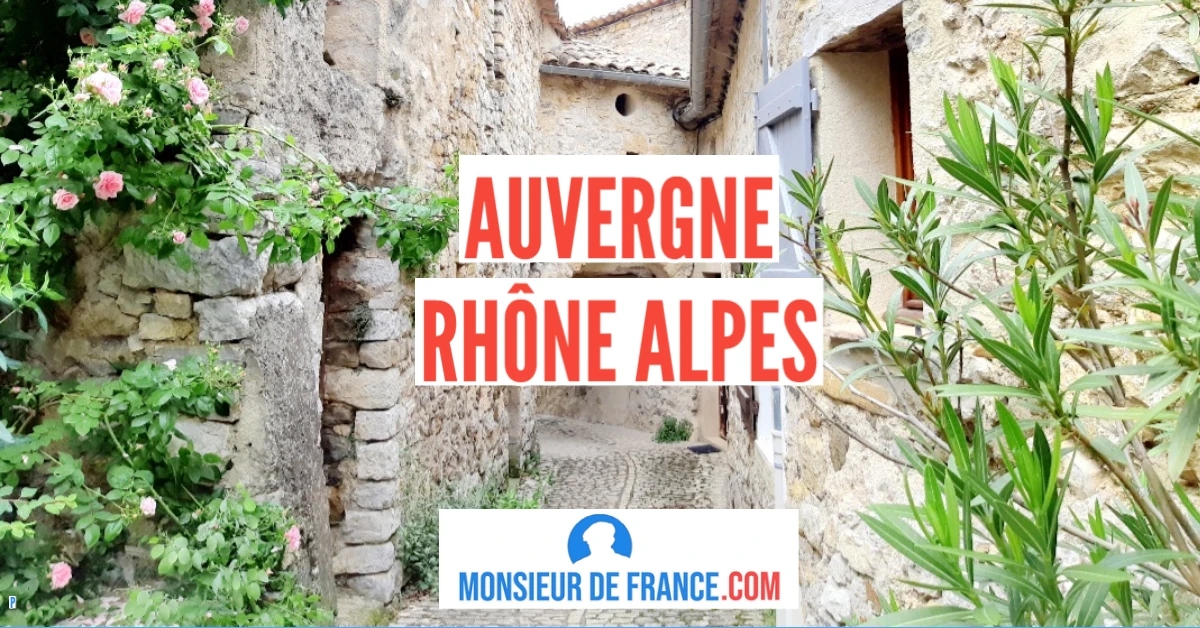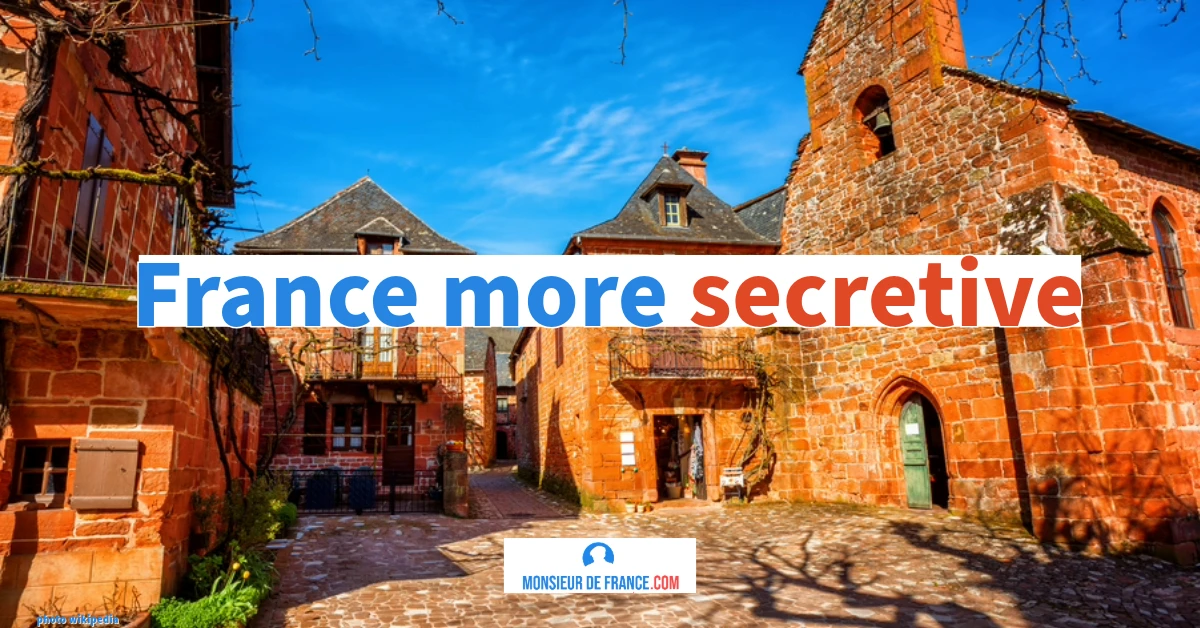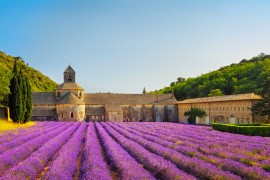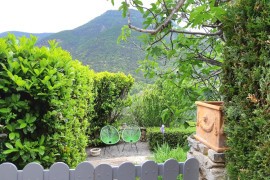Where is Grignan, the pearl of Drôme provençale?
It's the blue of a lavender river that beats the rock of Grignan under the mild sun when summer begins in the South of France. Grignan, in the Drôme provençale. A name that reminds us that here lies an enclave of Provence in the land of Dauphiné and not so far from the Massif central. A promise of Provence then. A promise kept!" It's all there: the sun, the colors, the smells... Grignan has a population of 1,500, not a lot, is it? So I'm not sure you get the picture. Let me describe what I saw.

Grignan: Photo by JFFotografie/Shutterstock
Grignan: a town perched on a sea of lavender
It's a city like a pyramid. It looks like it was born in the imagination of a Charles Perrault fairy tale or a good Disney. At the very top, the town is crowned by one of France's most beautiful châteaux. A château? That's an understatement. More like a palace: the "Versailles of the South". It's suspended squarely in the sky above olive groves and vineyards. To get there, do as I do - and believe me, I'm no sportsman!" Leave the car at the bottom, and make your way up by calf power. It's a real pleasure to take your time moving forward, discovering this or that house and even getting lost in a veritable maze all the way to the Tricot gate and finally to the château.
Photo by Léonard Cotte on Unsplash
The Marquise de Sévigné and her letters
At the end of the 17th century, the Paris mail service made this journey hundreds of times before you, to deliver the letters of the Marquise de Sévigné. In fact, it's here in Grignan that the woman who wrote the world's most beautiful correspondence in French has been laid to rest for over three centuries. As you make your way down the steep streets, you'll discover the culinary treasures of this pretty corner of France: black and green olives, Drôme wines and, above all, the country's black gold, the famous truffles.
When you get to the bottom, sit down. Here. At the foot of the city. Watch it pop up in the distance as I did, feel that breath of wind coming up behind you, cuddling your neck and heading straight back out to shiver the blue of the lavender fields before climbing back up to a "Provence blue" sky in the heart of the Drôme.
Grignan: Photo Jérôme Prod'homme (c) Monsieur de France
History and origins of Grignan, jewel of Drôme provençale
A castle on a rocky outcrop in the heart of lavender fields
It's said that the name "Grignan" comes from the Latin "gratius" meaning "graceful". After all, it's hardly surprising. You only have to arrive in Grignan and see the little town emerge from the lavender fields, or watch it grow around a bend in the road, to realize that it's hard to find a more graceful place. The village was probably born at the same time as the castle, around the year 1000. In any case, it's mentioned as early as 1105. It makes sense to have a castle here: a rocky outcrop that allows you to see far, and to see far is to see trouble coming and prepare to face it. Mind you, it doesn't just work for the military either, in life it can also help to see trouble coming from afar, can't it? A castle, then, to take refuge in in case of danger, and as there are always people in a castle, at the foot of it, there's commerce and everything to supply all those people. And so, Grignan was born.
Victor CASSIEN / Album du Dauphiné - tome IV, litography of Grignan, Drome
A charming Provencal town
For those who might think that the name Provence is a little usurped because they locate Provence further afield, the archives speak for Grignan: the lords of Grignan paid homage to the kings of Provence in the year 843. Similarly, the barons of Grignan paid homage to the counts of Provence in the year 1257. So they had a southern accent, the Adhémar, descendants of Hugues Adhémar, born in 1045 and founder of a dynasty that made Grignan the seat of a county in 1557 and built the magnificent white stone château. A château that followed the family and remembers seeing Madame de Sévigné writing when she came to visit her daughter married here to François Adhémar de Grignan.
Sold by Pauline de Simiane, Madame de Sévigné's granddaughter, as the family was so deeply in debt, the château belonged to the Castellanes and time took its toll on it until another talented woman, Marie Fontaine, fell in love with the place and devoted almost her entire fortune to it around 1913, renovating it, even literally rebuilding it. Since 1937, it has belonged to the Conseil Départemental de la Drôme, which has turned it into a place of culture, history and entertainment. It's impossible not to, at least, survey its terrace during your visit: the view is just sublime on both sides: towards the facades of the château or towards the beautiful countryside all around the town of Grignan.
View from the château / Jérôme Prod'homme (c) Monsieur de France
What is the link between Madame de Sévigné and Grignan?
The story of Madame de Sévigné, the marquise of French correspondence
Madame de Sévigné / Attributed to Lefebvre
Un mariage !
Françoise de Sévigné, Comtesse de Grignan, daughter of Madame de Sévigné, spent most of her time at Château de Grignan with her husband François Adhémar de Grignan. And this was difficult for the Marquise, as living in Paris meant that hours, indeed days, of travel separated her from Françoise. But Madame de Sévigné adored her daughter, and vice-versa. That said, these two strong-willed women often quarreled. When they saw each other, they argued, and when they didn't, they missed each other. Don't you agree that happens to quite a few mothers and daughters? The Marquise, wanting her letters to be read, and her advice sometimes listened to, put a lot of heart into talking about lots of different subjects, even if the Court of Louis XIV comes up a lot since she was part of it. Her legendary humor, her sense of portraiture, make each letter a veritable paradise for the mind. So, when her daughter was living in Grignan, the marquise would write to her from Paris. And she often came to see her daughter, too. In fact, it was during a stay at the Château de Grignan that the Marquise de Sévigné died on April 17, 1696. She now rests there.
Françoise de Sévigné, Comtesse de Grignan, daughter of Madame de Sévigné oil painting attributed to Pierre Mignard (circa 1669), Musée Carnavalet, Paris.
An arranged marriage to avoid having children
Her daughter moved so far away, to Grignan, because Madame de Sévigné feared she might become pregnant. Let me explain: in the 17th century, the leading cause of death for women (by a long way) was childbirth. We've lost count of the number of women who "died in childbirth" in an era that didn't know how to perform Caesarean sections, that knew nothing about microbes and took no hygienic measures, and that was full of superstitions that led people to do things that were very harmful to their health.
For example, in Paris, among bourgeois women, a rabbit is skinned alive and its still-warm skin is applied to the belly of the woman giving birth to help her... Madame de Sévigné was well aware of this, and loved her daughter so much that she did everything in her power to prevent her daughter from giving birth. And to do this, she relied on an unstoppable trick: ugliness. She did her utmost to find the worst possible husband so that her daughter wouldn't want to make love at all. To marry Françoise, she therefore chose an older, ugly man in the person of François Adhémar de Grignan, 14 years older than the young bride and rather ugly.
François Adhémar de Grignan by Nicolas de Largillierre - Portrait of François-Adhémar de Monteil, comte de Grignan (1629-1714) - P2209 - Musée Carnavalet
A love story and a legacy in Grignan
Miscalculation for the marquise. Not only did the two newlyweds fall in love, but François Adhémar must have been good at the Thing since they made love very, very often. Including when the Marquise was vacationing with them. In fact, she could hear them very well since she slept right above their bedroom. They had six children...
La Statue de Madame de Sévigné à Grignan (wikipedia photo by Arnaud 25)
Madame de Sévigné's eternal resting place at Grignan
She rests here. Descended from a prominent Burgundian family and a true Parisian, Françoise de Rabutin-Chantal married the Marquis de Sévigné, a Breton, and the family château still exists: Château des Rochers, in Brittany. She lived most of her life in Paris, in a beautiful mansion in the Marais district. But it was while staying with her daughter in Grignan that she died on April 17, 1696. Her tomb can still be seen in the chapel of the Château de Grignan, below the château. It was desecrated during the French Revolution (when almost all the coffins of nobles were exhumed to find lead and melt bullets), but put back in place, proof of the respect in which the writer Françoise de Rabutin-Chantal was held even then.
A beautiful statue in the town pays tribute to him.
The most beautiful quotes by Madame de Sévigné
-
"The heart has no wrinkles."
-
"Things almost never happen the way you imagine them."
-
"Time flies and carries me away in spite of myself: no matter how hard I try to hold on to it, it's always dragging me along."
-
"Hard work conquers all."
-
"Beware of flattery, girl: too much sugar spoils your teeth."
What to see in Grignan: must-sees in the Provencal town
Discover the town of Grignan and its typical alleyways
It's uphill, but so pretty! Wander the streets, take photos, discover here a mansion, there a pretty house. Note for example the Porte du Tricot, with its belfry and bell, the Maison du Bailli, today Maison de Colophon the printer, a printing museum but also a very nice bookshop. La Rue Saint-Louis and its little houses is very beautiful too. I have a soft spot for the Saint-Vincent chapel (patron saint of winegrowers, and we make very good wine in Grignan). It's very old, nearly 1000 years, and it's in the cemetery. Note the modern stained-glass windows by Ann Veronica Janssens.
Grignan Image by Xavier Turpain from Pixabay
Château de Grignan, the Versailles of the South
Facade of the Château de Grignan: Photo by RudiErnst/Shutterstock
Nicknamed "the Versailles of the South", it's high up on the piton and, from its terrace, you can dominate the surrounding area. A wonderful place to take photos. The facades are Renaissance and incredibly beautiful, all white or honey.
But the Middle Ages are not far away with the entrance châtelet. Spectacles are held here, and the cultural program is well worth a visit.
The Saint-Sauveur collegiate church and the old roses trail
Collégiale Saint Sauveur de Grignan : Photo by EQRoy/Shutterstock
This is the church of Grignan. It contains beautiful 17th-century woodwork. The organ is very old. You can see the seigniorial tribune that was home to the Marquise de Sévigné. A must-see! And don't miss the chemin des roses anciennes: roses grown by enthusiasts grouped together in an association. Also worth seeing, all around Grignan, the lavender fields in summer, the vineyards and the winemakers who will offer you their wines.
Culinary specialties of Grignan and flavors of Drôme provençale
Grignan-lès-Adhémar PDO wine, heir to a thousand-year-old terroir
It's the wine of Grignan. It benefits from an Appellation d'Origine Protégée (AOC). Wine has been made here for almost 2000 years, since the emperor Vespasian (77 AD) is credited with planting vines in the area. It exists in red (it's the biggest production), rosé and white wine.
A delicious wine: Photo by Alexander_Kuzmin/Shutterstock
Tench, Nyons' emblematic black olive
You'll find the specialties of Drôme provençale, starting with the olives noires that made Nyons' fortune from the 19th century onwards. Also known as "tanches", they have been the subject of an Appellation d'Origine Contrôlée (AOC) since 1968.
Olives noires Photo par Fatih Samli/Shutterstock
Montélimar nougat, a sweet southern delicacy
After all, Montélimar isn't far away. You absolutely must try this nougat, which has made the town's reputation. Moist to perfection, made from almonds, honey and egg whites. It is flavored with dried fruits (hazelnuts, pistachios...).
What to see and do around Grignan
Around Grignan, the landscapes of Drôme provençale unfurl a postcard setting of lavender, cypress and perched villages. A stone's throw from the château, the collégiale Saint-Sauveur and the Maison de l'Imprimeur Colophon invite you to stroll through the lively alleyways. Nearby, La Garde-Adhémar, Le Poët-Laval or Nyons are among France's most beautiful villages: old stones, colorful markets and sunny terraces. Nature lovers can follow the trails of the vallée des Nymphes or skirt the Grignan-les-Adhémar AOC vineyards, before sampling olive oil, wines and local truffles. Expanding the circle a little, we reach Vaison-la-Romaine, the Ardèche Gorges or Avignon, perfect for a day's getaway.
Where to stay in Grignan: our favorite Domaine du Bois des Dames
Chantemerle les Grignan / Jérôme Prod'homme (c) Monsieur de France.
Near Grignan, if you like guest houses, book at "Domaine du Bois des Dames" in Chantemerle-les-Grignan. You'll be warmly welcomed by Clotilde and Arnold, who took over the place a few years ago and have made it a treasure trove of good taste, kindness and joie de vivre.
Clotilde et ses confitures / Jérôme Prod'homme (c) Monsieur de France.
It's a pretty farmhouse, with swimming pool, garden, and an inner courtyard in which we love to meet with the other people staying to taste the homemade jams (and with an incredible choice), pick up an aperitif (the homemade spritz is to die for) and before dining in the dining room the dishes prepared by Arnold, the owner, who has a predilection for truffles.
The spritz is perfect / Jérôme Prod'homme (c) Monsieur de France.
Address: Route de Clansayes, 1510 D471, 26230 Chantemerle-lès-Grignan
Practical Information – Grignan
Access / How to Get There
The lovely village of Grignan, nestled in the Drôme Provençale, is best reached by car via the A7 motorway, exit Montélimar Sud, then a scenic 20-kilometre drive through lavender fields and vineyards. From Avignon, the trip takes about 1 hour 15 minutes, and from Lyon, around 2 hours. The nearest train stations are Montélimar (25 km) and Orange (45 km), both served by regional and Intercités trains. The closest major airport is Marseille-Provence, about 1 hour 45 minutes away. As public transport is limited, it’s highly recommended to rent a car to explore Grignan and its surroundings.
Tickets and Visiting Tips
Access to the village itself is free, but the Château de Grignan, once home to the famous Marquise de Sévigné, charges an entrance fee of around €8 for self-guided tours and €10 for guided visits. Evening tours and summer performances bring the castle to life in the warmer months. The Typography Museum (Maison du Bailli) costs about €5. During festivals or weekends in summer, it’s best to book tickets online in advance. Parking around the historic centre is generally free.
Useful Contacts
Tourist Office – Enclave des Papes & Pays de Grignan
Place Sévigné, 26230 Grignan
Phone: +33 (0)4 75 46 56 75
Email: info@grignanvalreas-tourisme.com
Official website: https://www.grignanvalreas-tourisme.com
FAQ Grignan: frequently asked questions
Is picnicking allowed at Château de Grignan?
Yes, it is allowed for visitors with a ticket valid for the day.
Do you need to book tickets in advance?
This is recommended, especially in summer. By booking online, you can avoid queues and choose between self-guided and guided tours.
Can we visit only the castle exteriors?
Yes, the gardens and terraces are accessible at a reduced rate for those who simply wish to admire the view.
Is there on-site catering?
Yes, a café offers cold drinks, cakes and snacks depending on the season.
Does the château offer guided tours?
Yes, guided tours "Traversez 1000 ans d'histoire" are organized all year round.
How long does it take to visit Grignan?
Half a day is enough to visit the château and stroll through the narrow streets, but a full day is ideal for exploring the surrounding area and sampling the local specialties.
Why is Madame de Sévigné associated with Grignan?
Because she came here to see her daughter Françoise, Countess of Grignan. It was here that she died in 1696.
Is there a festival in Grignan?
Yes, the Festival de la Correspondance is held every early July and celebrates the art of writing, in homage to Madame de Sévigné.
Is the château accessible to families?
Yes, the exteriors are stroller-friendly, and children enjoy a specially designed play trail.
Can I bring my dog?
Yes, leashed dogs are allowed in outdoor areas.

